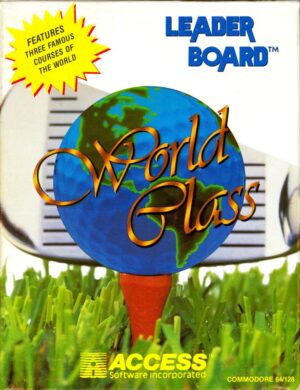Retro Replay Review
Gameplay
The King of Fighters ’95 retains the core three-on-three team battles that defined the original tournament, offering a familiar yet refined fighting system. Input commands for special moves, throws, and counters remain intuitive for veterans, while newcomers can pick up basic attacks and combos with minimal frustration. Matches flow smoothly, and the hit detection feels precise—a crucial aspect when chaining Super Special Moves or evading an opponent’s pinning assault.
(HEY YOU!! We hope you enjoy! We try not to run ads. So basically, this is a very expensive hobby running this site. Please consider joining us for updates, forums, and more. Network w/ us to make some cash or friends while retro gaming, and you can win some free retro games for posting. Okay, carry on 👍)
One of the standout additions in ’95 is the “team edit” feature, which lets you assemble any trio of fighters regardless of their affiliation. Gone are the limitations of preset teams: you can mix and match Kyo Kusanagi with Ralf Jones and Yuri Sakazaki, or even sling together a more offbeat lineup like Mai Shiranui, Iori Yagami, and King. This layer of customization not only boosts replay value but also invites creative strategies—experimenting with complementary moves, damage output, and team synergy becomes an engaging pursuit.
Adding to the depth is the introduction of Iori Yagami, whose agile, aggressive style contrasts sharply with Kyo’s balanced playbook. Iori’s “Yami Barai” and “Maiden Masher” supers add a new dimension to offense, rewarding players who master his unique animations and timing. The roster’s balance remains impressively intact: no one character feels overwhelmingly superior, encouraging competitive play and preventing stale matchups. Whether you’re facing off against the CPU boss or a skilled local rival, each battle demands quick reflexes and smart resource management.
Graphics
Visually, The King of Fighters ’95 stands as a high-water mark for mid-’90s arcade sprites. Character animations are smooth, with special moves and super attacks receiving extra frames that heighten their impact. From Kyo’s blazing punches to Iori’s purple flame bursts, each effect carries a satisfying weight that still reads clearly on modern displays. Pixel edges remain clean, and the subdued grain of the arcade hardware translates well to emulated or home conversions.
Background stages have been given a careful polish over the previous installment’s offerings. Whether you’re duking it out in Rugal’s ominous throne room or a bustling neon-lit cityscape, environmental details—like flickering torches, swaying banners, and distant crowd animations—help to ground each location. The color schemes maintain the series’ signature vibrancy without feeling overly saturated, striking a balance between spectacle and readability.
Finishing touches, such as refined character portraits and dynamic win screens, lend an anime-inspired flair to victory celebrations. Facial expressions and shading in these stills feel sharper than in ’94, and the overall presentation is more dramatic—very much in keeping with SNK’s evolution toward grander, story-driven fighting games. For fans of classic 2D fighters, the visuals here remain both nostalgic and technically impressive.
Story
The first sequel in the King of Fighters series picks up a year after the end of the first tournament. Once again, fighters from all over the world receive a mysterious invitation to a team-based fighting tournament. And just like last year, it appears that the notorious criminal Rugal Bernstein is behind it, apparently returning from the dead to raise havoc once again, setting the stage for a high-stakes showdown.
The King of Fighters ’95 introduces Kyo Kusanagi’s rival Iori Yagami, and firmly places Kyo as the main character for the rest of the series. This installment’s storyline deepens the ancient flame-versus-curse feud between the Kusanagi and Yagami bloodlines, adding layers of personal rivalry to the global conflict. The interplay of familial destiny and criminal machinations gives each match more narrative weight than a simple tournament bracket.
While the story remains primarily a backdrop to the action, its characters and motivations resonate throughout the gameplay. Unlockable endings for each team provide satisfying closure, and teaser scenes hint at future arcs—ensuring that both newcomers and longtime fans have reasons to explore every character path. The blend of supernatural lore, criminal intrigue, and martial artistry strikes a classic arcade balance that keeps the tournament’s stakes feeling both epic and personal.
Overall Experience
The King of Fighters ’95 builds on its predecessor’s foundation to deliver one of the most engaging 2D fighters of its era. The addition of the team edit feature elevates replayability, the roster expansion—highlighted by Iori Yagami’s debut—offers fresh matchups, and the solid core mechanics ensure each fight remains tense and rewarding. For those who cut their teeth on ’94, this sequel feels like a natural evolution that never loses sight of its roots.
Multiplayer sessions shine here: head-to-head battles are lightning-fast and demand genuine skill to read opponents and execute punishing combos. The game’s balance keeps no single character unbeatable, and community-driven team combinations can lead to surprising underdog victories. Even in solo play, facing off against Rugal’s resurrected might or tackling each team’s ending scenes provides hours of satisfying challenge.
Ultimately, The King of Fighters ’95 stands as a landmark entry in the series. It caters equally to competitive fighters seeking deep mechanics and arcade fans who simply want vibrant sprites and pulse-pounding matchups. Whether you’re reliving ’90s arcade glory or discovering KOF for the first time, ’95 remains an essential chapter in one of the fighting game genre’s most storied franchises.
 Retro Replay Retro Replay gaming reviews, news, emulation, geek stuff and more!
Retro Replay Retro Replay gaming reviews, news, emulation, geek stuff and more!









Reviews
There are no reviews yet.